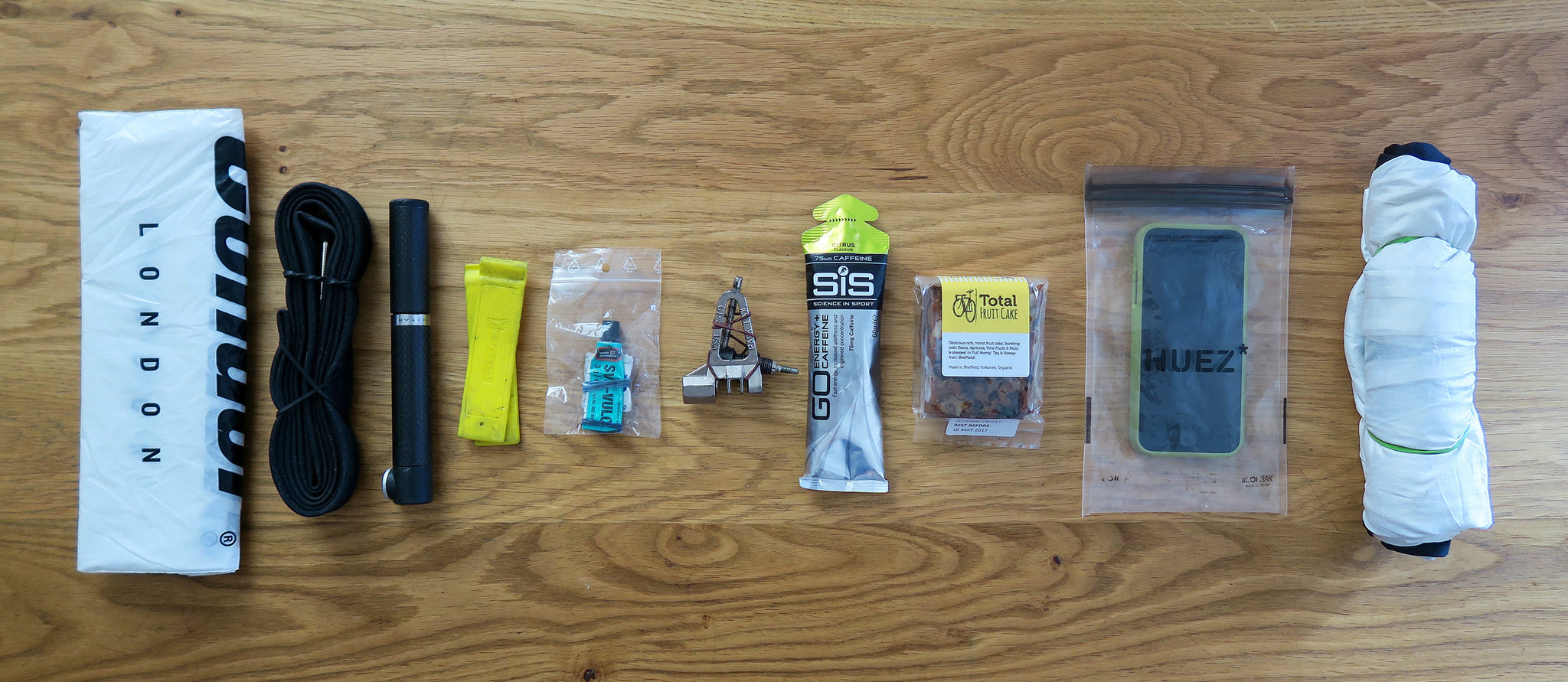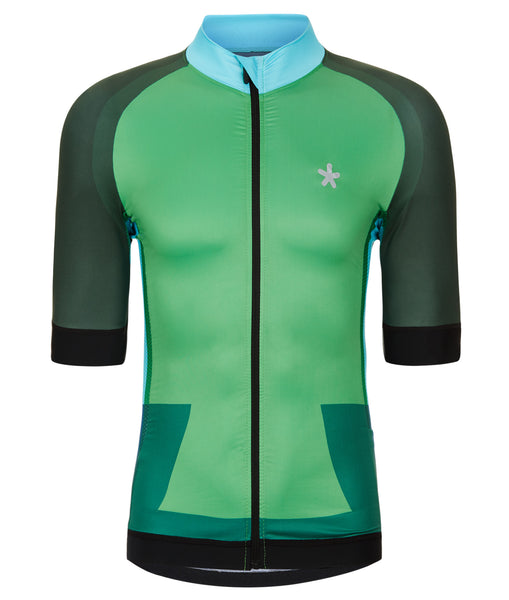Are you planning to tackle some of the toughest climbs the Alps have offer this summer? Have you signed up to this years Etap du Tour?
We wanted to ask veteran of the Alps and writer of '100 Greatest Cycling Climbs of the Tour de France' how to get through it. So here are his top 9 tips for preparing for and surviving this year’s Etape du Tour.
1. Know what you are up against.
A few years ago, I was traveling down to ride the Marmotte (the epic sportive held each year in the Alps), when one of the guys on the trip asked, 'How hard is the climb?'. The rest of us said, 'The climb?', He said 'Yes, the climb, Alpe d’Huez, the mountain on the route'. We looked at him again 'You do know there are four mountains don’t you?', 'You do know you have to cross the Col du Glandon, the Col du Telegraph and the Col du Galibier before you even reach Alpe d’Huez!' At this point the colour began to drain from his face, 'Um, no'. He had NO IDEA what he was in for, and boy was he in trouble.
So, make sure you do know what lies ahead so you are both mentally and physically prepared for the challenge.
2. Do a bit of training.
Obviously you will not have entered the Etap if your weren’t fit and ready for the challenge, however, you may never have attempted anything as arduous as this so make sure your body is as prepared as it can be.
I like to get a big ride in about a month before, just to remind myself what it’s like to be on the bike for a long time - maybe enter a long UK sportive to get these miles in the legs and see how you cope over the distance? This is also a good opportunity to practice your fuelling, and your pre-ride prep so you don’t forget anything on the big day.

3. Setting up your bike.
It was years before I swallowed my pride and invested in a 34/50 compact. I was brought up riding a 42/52 so to be riding a 34 inner ring was just ridiculous. But it’s the best decision I ever made. The smaller gears have really saved me on some tough days in the mountains and when you are not using your largest sprockets you’ll get a much better chain line on the middle of the block.
If you are going to fit any upgrades to the bike like a new chain, do it a few weeks before the big day to make sure everything is bedded in and if it’s going to break it’s best to break at home and not half way up a mountain.
Likewise with your clothing, you may want to look your best but is your posh merino wool really the right choice for 8 hours in the mountains? Pick the clothes you are most comfortable riding in I’ve been testing out the latest summer weight Bleed Print Jersey from Huez and it would be my choice for a hot day of riding in the Alps.
4. What to carry on the day.
You will be climbing for the majority of the day so yes, anything you carry up the mountain will slow you down but having said that, there are some corners you just can’t cut. Firstly, take a proper jacket. Don’t be tempted to pack just your lightest gilet because it will save you 5 grams over your rain cape, a good jacket could save you from hypothermia so is well worth the weight penalty (the weather in the mountains can be very unpredictable).
Likewise, it may seem like a clever idea to pack an ultra light inner tube, but again, a few extra grams are better than 50 miles on a flat tyre.

5. Fuel before…
Eat well the night before, stuff the body full of protein and carbs, but don’t go overboard. I once ordered ‘double’ lasagna the night before an event, I almost had to be carried back to the hotel and it was hours before I got to sleep as my body struggled to digest the immense amount of food I’d stuffed into it. So eat a big meal, hydrate plenty, oh, and no more than a couple of beers, they can wait till the next evening! For breakfast, eat like a king, cereal, eggs, cold meat, pack your muscles with as much as you can and at least an hour before you set off to give it time to digest.
…and during the event
The event will have multiple feed stops which will have plenty of food for everyone so there’s no need to tape 20 gels to your top tube, you will not need them, they will just weigh you down. I would always advise taking a couple and maybe a bar if you get caught short, but always remember the more you carry the harder it will be to climb. Have a good look where the feed stops are so you know where you can get food and more importantly where you can fill your bottles. It’s likely to be over 30 degrees in the mountains in July so you must stay hydrated. I always fill one bottle with plain water and the other with energy drink because after eight hours you will be sick to death of sweet tasting liquid and relish plain water.
6. Take your litter home.
There is NO excuse, not a SINGLE one, for dropping litter in the mountains, you are their guest and you will treat the environment accordingly. I know the pro’s do it, but they do lots of things you shouldn’t so once you’ve squeezed a gel down your throat stuff the wrapper up the back of your jersey. Don’t put it in the pockets, this will just glue everything else together, just push it between your top and shorts then when you get to a feed stop you can dump it there. OK!
7. What goes up, must come down.
Back home you can ride hard for hours to simulate the stresses of climbing, it doesn’t have to be uphill, but what’s really hard to prepare for is a 20 kilometre descent. The pro’s make it look so effortless on TV as they swing round the corners but just take it steady to begin with as you get a feel for it. After 30 minutes of downhill your arms will be hurting in places you didn’t know you had but you will be some way to perfecting your ability to tackle a hairpin at speed, just remember, take care.
8. This year’s route.
To summarize the challenge of this year’s route you’ve got a nice, almost 40km downhill to start with. A little climb over the Cote des Demoiselles Coffees, then two absolute monsters. First up, the Col de Vars. You’ll basically start climbing this mountain from Le Sauze-du-lac all the way through Barcelonnette but things don’t really get tasty until you reach Les Gleizolles, then worse still after Saint-Paul-sur-Ubaye. From here, and for the next seven kilometres the climb is a beast with some savage kilometres of 10% gradient towards the top so be prepared to suffer. Following the long drop the other side the highlight of the day and highpoint is of course the mighty Col d’Izoard. Peaking at well over 2000 metres in altitude you can feel how thin the air is at the top and by now your legs will be tired. Along it’s 14 kilometres there are nine that average over 9% making this one of the toughest ascents in the Alps, but the end lies at the top so give it all you have. Its severity is also matched though by its beauty as toward the summit you pass through the alien surroundings of the Casse Déserte. All but devoid of life, the sides of the mountains covered with scree, punctuated by towering spikes of rock it’s one of the most iconic roads in all of France.
9. Have fun, and don’t forget to enjoy the view.
Yes it will hurt, you will suffer, but you must enjoy every second and soak up those views. Whenever you are tired remind yourself of where you are, of how high up you are and that it’s your legs that have got you there, riding in the mountains is a breathtaking experience on more that one level, so HAVE FUN!


Your basket is empty!